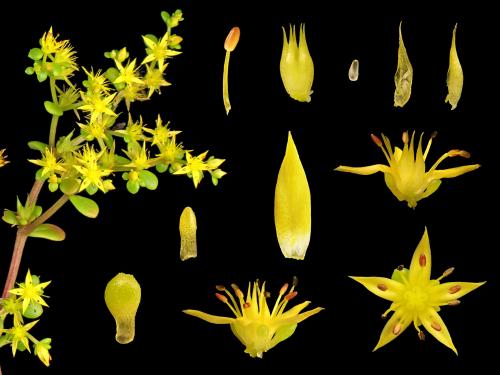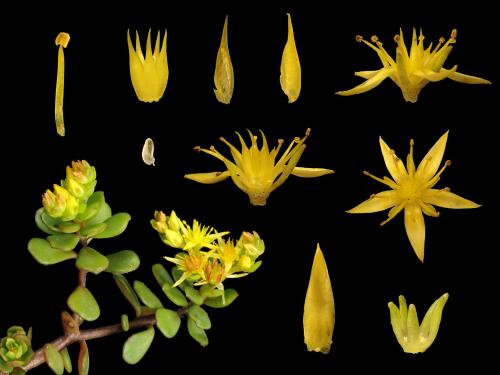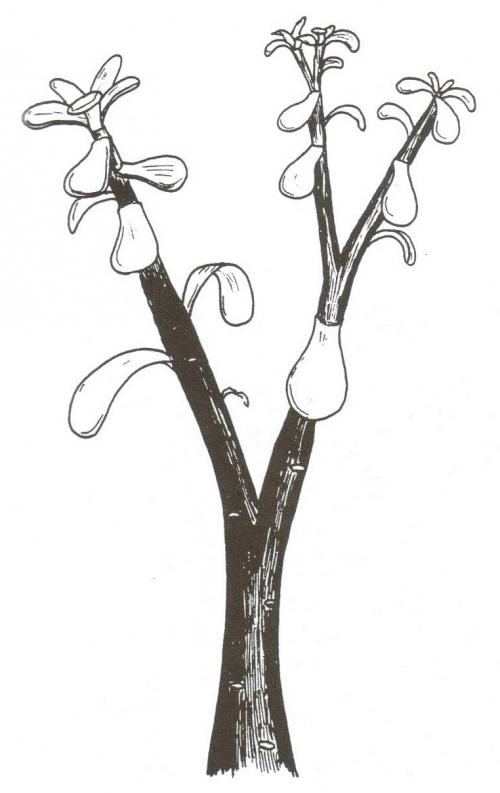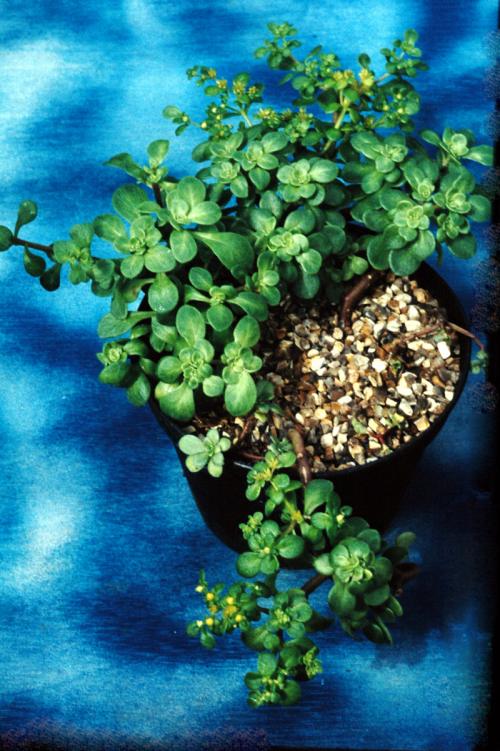FORMOSANUM N. E. Brown, 1885
Synonyms :
Sedum loochoense Makino & Kuroiwa (1900)
Sedum mariae Hamet (1910)
Sedum taiwanianum auct. (1972)
Distribution : Taiwan, Japan (Oshima Island, Ryukyu, Kyushu), northern Philippines (Batan Islands), probably southern Korea; rocks at the shore, rarely inland.
Description (by 't Hart & Bleij in IHSP, 2003) :
Annual tufted herbs with erect or arcuate, di-or trichotomously branched, densely leafy, rather stout stems, to (15-) 20 cm tall.
Leaves alternate, sometimes whorled, spatulate to obovate, rounded to obtuse, 10 - 20 x 8 - 12 mm.
Inflorescences rather large many-flowered cymes, bracts leaf-like.
FIowers 5-merous, sessile, sepals basally free, shortly spurred, unequal, linear-lanceolate to spatulate-subovate, rounded to obtuse, 3,5 - 5 mm, petals semi-oblong, broadly submucronate, yellow, 5 - 7 mm, anthers yellow.
Cytology : 2n = 64, 66.
Note :
1. Close to S. alfredii and included under that species by Fu & Pu (1984). It is hapaxanth like S. alfredii and sometimes perennating (Ohba 1982e: 559).
2. Takuro Ito et al., published the ssp. miyakojimense in Phytotaxa 148: 51-70, 2020.
Ray Stephenson (Sedum, Cultivated Stonecrops, 1994, p 159)
Common name : Hama-mannengusa
Upon first growing this species, I was amazed at the stature plants attained. Bases of stems developed a girth of nearly 2 cm (0,8 in), and annual plants, resembling little bonsai trees, exceded 25 cm (10 in) in height . Well-spaced, very blunt, thin, bright green, obovate-spatulate leaves are alternate or sometimes opposite. The large cymes of flowers are not particularly bright, but carry a lot of sessile flowers.
Sedum formosanum :

Sedum taiwanianum :

Photos by taiwanicus

Habitat : Ryukyu Islands, China, Philippines, and Taiwan are the homes of this species, mostly along seashores.
Main points of distinction : The form in cultivation bears little resemblance to other yellow-flowered Far Eastern sedums. It is a stout, upright annual or biennial. Stems are forked, and eventually spread. Flowers have slightly spurred, spreading, leaf like sepals. Carpels are only slightly divergent in fruit.
Variation : Drawings of plants collected from habitat indicate some plants can be quite feeble. Plants have been reported that geographically and vegetatively are midway between Sedum nagasakianum and the species.
Horticulture : It is said that this species can be persuaded to act as a perennial, as it often does in the wild, but so far I have not succeeded. I was disappointed when rooted cuttings flowered at exactly the same time as the parent plants, neither producing sterile shoots.
